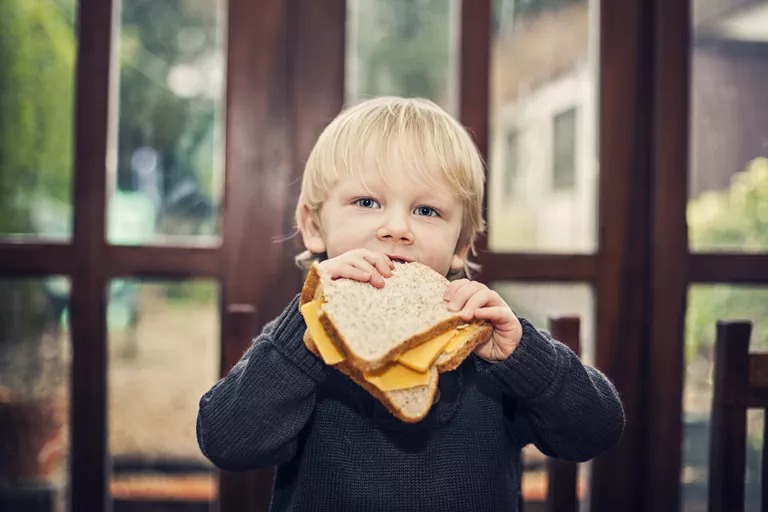Take Early Action Against Child Obesity

It is not a secret that obesity has been increasing in the United States for the past three decades, and children have not been immune. In 2016, 18.5% of children aged 2 and over were obese (about 13,7 million children and adolescents).1 as a child’s father, You ‘ve probably been so busy trying to keep up with your little asset that the possibility that your child is overweight or obese is probably one of the last things in your mind.
Obesity in Toddlers
“Unfortunately, obesity has become common among toddlers in our country,” says Dr.Amanda Staiano, spokesperson for the Obesity Society and assistant professor at the Pennington Biomedical Research Center at the Louisiana State University. Nationally representative data indicate that approximately 14% of children aged 2-5 years are obese. Obesity remains particularly high among children who are an ethnic minority or who are low-income families, ”says Staiano, “And the rate of severe obesity (the very high-end weight spectrum) continues to increase.
it is important that parents do not ignore the weight of their toddler. Being obese places a child at a higher risk for several serious health problems, including some that can start during childhood and adolescent years, including diabetes, heart disease, asthma, some cancers.
Also, according to Staiano, many children with obesity face bullying from peers, which can be harmful to the child’s self-esteem.
While a toddler may not be at risk for any of these immediate consequences, it is important to note that it becomes increasingly difficult to get a child from the obese category to the healthy weight category as a child gets older because eating and activity habits are being ingrained and the weight difference becomes larger, says Staiano. A 2-year-old child who is overweight may need to stay the same weight (without gaining) for several months for their height to “catch up.” But a 10-year-old may need to actively lose weight in addition to letting their height catch up.
How to Tell If Your Toddler Is Obese
How do you even know if your toddler is overweight or obese? Similar to cognitive, gross motor, and fine motor skills milestones, the range of what is “normal” when it comes to a toddler’s weight varies widely and a few pounds can make a big difference depending on height. And sometimes, kids slim down a bit when they begin to walk.
According to Staiano, parents can educate themselves by going online and finding out their child’s weight category. For ages 2 and older, the CDC offers a calculator that allows parents to enter their child’s age, height, and weight and learn if their child is classified as underweight, healthy weight, overweight, or obese. Note: This calculator only works for children ages 2 and over because that’s when health professionals start using the body mass index (BMI) growth charts.
“The reason I think the calculator is important is that it’s not always easy to ‘see’ obesity, especially in toddlers who are growing so quickly. Doctors, parents, and teachers have a tough time classifying obesity based on visual sight,” says Staiano. “For example, a 2-year-old girl who has an average height (37 inches) would be considered underweight if less than 29 pounds, overweight if between 35 and 37 pounds, and obese if over 38 pounds. It can be tough to visually tell the difference between a couple of pounds, so the calculator is really helpful.”
Signs of Normal Growth in Young Boys and Girls
What to Do If Your Toddler Is Overweight
So what should you do if your toddler is classified as overweight or obese? According to Staiano, there’s no need to panic.
“[Learning your child is classified as obese or overweight] just means you’re equipped with knowledge about your child’s health,” explains Staiano. And once you’re equipped with the knowledge, you can take action.”
As a parent who is concerned about their child\’s weight, the first thing you should do is make an appointment with your child\’s pediatrician. Together, you can come up with a plan.
“The pediatrician should be plotting the child’s height and weight on a growth chart and talking with the parents about ways to help their child eat healthily and get physical activity,” says Staiano.
At the young age of 1 or 2 years old, the goal is not for the child to lose weight, but rather to either slow down weight gain or to keep the weight the same. This allows the child’s height to catch up to the child’s weight.
It also helps if parents prepare in advance to have a conversation with their toddler’s doctor. “At LSU’s Pennington Biomedical Research Center, we designed a toolkit especially for Louisiana pediatricians, but this toolkit is also available for free for parents anywhere. It gives an idea of what doctors should be doing to screen for obesity and counsel families on weight management. Parents can download the toolkit and are welcome to print it out and take some pages to their doctor to help the conversation,” says Staiano.
Home Tips for a Healthy Toddler
Parents should also feel empowered to make changes at home, regardless of the weight category a child falls into. Making healthy changes can help to ensure they are reducing the risk of childhood obesity. Here are a few suggestions to get you started:
Encourage your child to try nutritious foods. Toddlers have a reputation for being picky, but keep offering fruits, veggies, whole grains, and lean proteins. Research shows it can take up several exposures to a new food before convincing a young child to try it, much less like it. Try different preparations of veggies that change the way the food feels in the mouth (think crunchy versus mashed versus roasted versus pureed). Something as simple as preparation can help increase the chances your selective eater will eventually come around.
Make sure your child sees his or her parents eating nutritious foods. In fact, start healthy family mealtime habits now—the sooner the better. Cook nutritious foods. Turn off cell phones, the television, and other devices, and sit down together for family dinners.
Keep screen time to a minimum. Not only does an increase in screen time typically mean a decrease in active time, but screen time can also mean your child is seeing commercials for sugary snacks and cereals that feature colorful (and potentially enticing) cartoon characters and catchy jingles. “Toddlers and preschoolers don’t understand that commercials are meant to be persuasive,” says Staiano. “If your child is going to watch TV, mute the commercials and do a fun interactive game during the break!” Or, use a service like Netflix or Hulu and skip the commercials altogether.
Make sure your child is getting plenty of exercise most, if not all, days of the week—and outside when possible. Of course, there is no need for a “formal” exercise routine with a toddler or preschooler. Take your child to local playgrounds, enroll them in a toddler class, like tumbling, soccer or dance, or simply let them run around in the yard. You can also make exercise a regular part of family time. Try a parent and child yoga class, bike to the farmers market, and simply engage them in physical activity whenever you can.
Avoid fruit juice. While fruit juice can be included once in a while as part of a toddler’s healthy diet, it’s better to stick to water when possible. Fruit juice often has artificial sweeteners and added sugar, which equals empty calories that won’t fill your little one up. Even without added sweeteners, juice doesn’t have the satiating fiber that whole fruits offer.
Help your toddler get plenty of sleep. Naps and an early bedtime help keep a child well-rested, which means your toddler will be less likely to be cranky or have a tantrum at the suggestion of trying new foods or participating in activities (among plenty of other great reasons to keep your toddler on a schedule).
Be an advocate for your child when they are not in your care. “Think about places your child spends time and ways to make them healthier,” says Staiano. “If your child goes to a preschool or daycare, find out what the child is being fed, what kind of physical activity the child does each day, and how much (if any) screen time is being allowed. Then find ways to help the center improve policies and practices to create a healthier environment for all of the children.”
Finally, as a parent of a toddler, remember that you can teach habits now that lower the risk of childhood obesity or obesity later in life.Moreover, it’s important to remember that your young children are watching you and you need to practice what you preach.
“Healthy living is for the entire family,” says Staiano.”If one child is struggling with obesity, the entire family should eat healthier and move more together.It’s harmful to target one child when the siblings (or parents!) aren’t eating healthy or getting physical activity.

